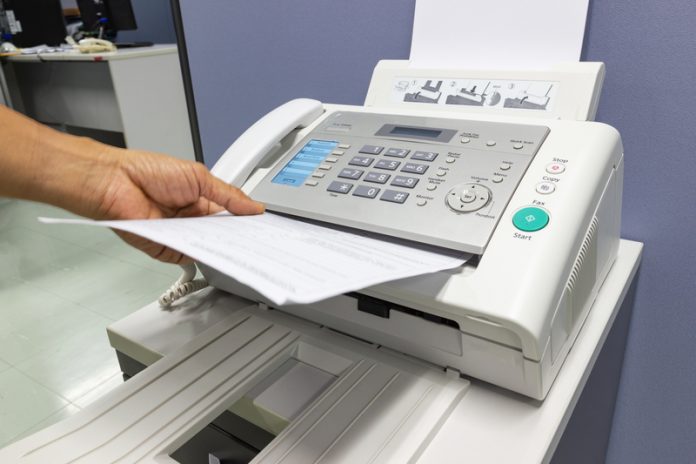Jason Rowles, Regional Sales Manager for PFU (EMEA) Limited discusses the opportunity facing the US as the government rolls out its fax machine ban
The news that the government is to ban the purchase of ‘absurd’ fax machines by NHS trusts, and outlaw their use by 2020 has bought about an interesting discussion.
The Royal College of Surgeons revealed in July 2018 that nearly 9,000 fax machines were in use across the NHS in England. Many trust employees still believe fax is essential as a back-up during IT outages. The technology’s use though highlights other issues and challenges the health service faces and demonstrates the need for more effective document management processes.
From a security perspective, fax creates a serious issue; when a fax is sent, it immediately comes out of a recipient’s machine. Unlike other methods of communication such as email, fax machines are not specific to individuals and typically sit in shared open spaces, meaning sensitive patient data could quite easily end up in the wrong hands. One therapist from Manchester was even quoted suggesting that her team constantly receives ‘faxes meant for other places in error’ – arguably a serious breach of GDPR and data protection legislation.
However, when looking at alternatives, it’s important to consider why NHS staff continue to use fax machines. One of the key reasons is the simplicity of sending a fax, and whilst the NHS continues to use paper, it presents a quick means of distributing and sharing documents.
The NHS is supposed to be pursuing a vision of running a paperless service by 2020. However, anyone who has been to see a doctor or visited a hospital recently will be able to clearly see this isn’t going to happen anytime soon. Going paperless may help to improve security and reduce waste, but it doesn’t allow for IT outages, and nor is it going to be practical to introduce anytime soon as most patient records and hospital notes are still paper-based.
When replacing fax, NHS Trusts should look at how they can bridge the gap between efficiency, waste and security. It is widely accepted that a reduction in paper is necessary to minimise waste, but a solution to the paperwork challenge must involve the latest scanning and document management technology. New scanning software solutions can truly help to bridge the gaps in the NHS, providing a secure means for document transfer and digitisation, helping to reduce the amount of paper in storage and circulation whilst also building on existing secure IT infrastructure.
By introducing new scanning technology, the NHS can work to reduce reliance on paper storage whilst continuing to maintain the practical benefits of being able to use physical forms and notes. With the latest devices, users can pre-programme personal profiles so their document types are recognised and can automatically be named, filed and uploaded onto servers and file hosting services. By putting physical documents online, access can be managed and controlled, reducing the chance of any sensitive patient records getting into the wrong hands.
Health Secretary Matthew Handcock has himself suggested that email is where the NHS should be headed. Many organisations scrapped fax nearly 20 years ago, and the NHS must follow suit.











